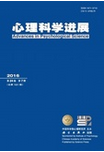Previous leadership research has primarily concentrated on the bright side of positive leadership styles, while paying less attention to their possible dark side. Although the recent years have witnessed an increasing number of these inquiries, there is still a lack of a clear understanding of the dark side of positive leadership. A review of 41 empirical journal articles illustrates the scientific status of this research area. In general, research has illustrated the dark side of behavior-oriented leadership (i.e., transformational, ethical, empowering, inclusive, and benevolent leadership) as well as relationship-oriented leadership (i.e., leader-member exchange) in terms of their negative effects on leaders, followers, and teams. Besides the research that solely examined the negative effect, there is a body of research that investigated the double-edged sword effects and nonlinear effect of positive leadership. Social identity theory, social exchange theory, psychoanalysis theory, social information processing theory, and resource-based theories were primarily used to account for the dark side of positive leadership. Future research should develop an integrated theoretical framework underlying the dark side of positive leadership, extend existing literature by examining the dark side of other leadership styles, and identify the boundary conditions that alleviate these dark side effects. Group differences (e.g., cultures, generation, and gender) should also be considered as boundary conditions of the dark side of positive leadership.




